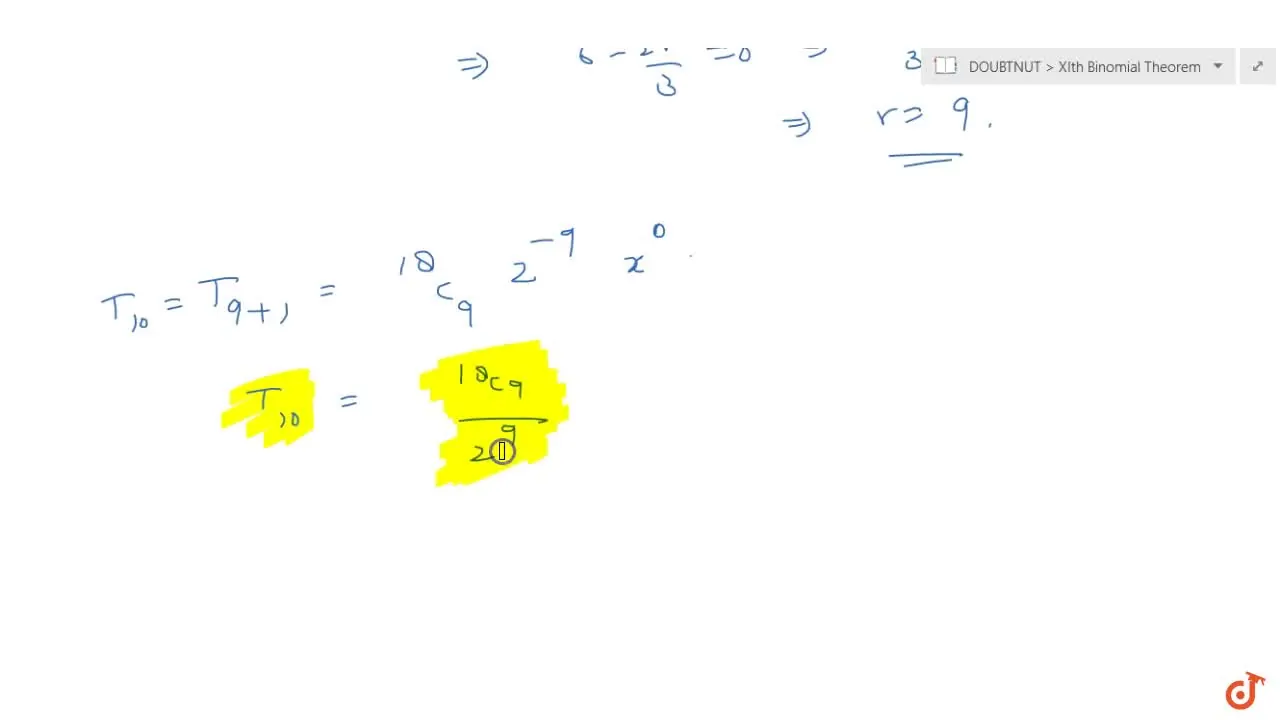Find the term independent of x in the expansion of
Video Solution
Text Solution
We know that
Comparing we get,
so,
Now,comparing power of x with
Putting value of r in (i)
|
Updated on:21/07/2023
Related Playlists
Similar Questions
The term independent of x in the expanion of (6√x−23√x)18 is
View SolutionFind the term independent of x in the expansion of: (x−1x)14 .
View SolutionFind the term independent of x in the expansion of: (2x2−3x3)10.
View SolutionFind the term independent of x in the
expansion of (32x2−13x)9View SolutionFind the term independent of x in the expansion of (2x2−3x3)25
View SolutionFind the term independent of x in the expansion of (32x2−13x)6.
View SolutionFind the term independent of x in the expansion of (32x2−13x)6 is-
View SolutionThe term independent of x in the expansion of (2x+13x)6 is
View SolutionFind the term independent of x in the expansion (2x2−13x3)10
View SolutionFind the terms independent of x in the expansion of (√x+13x2)10
View Solution


